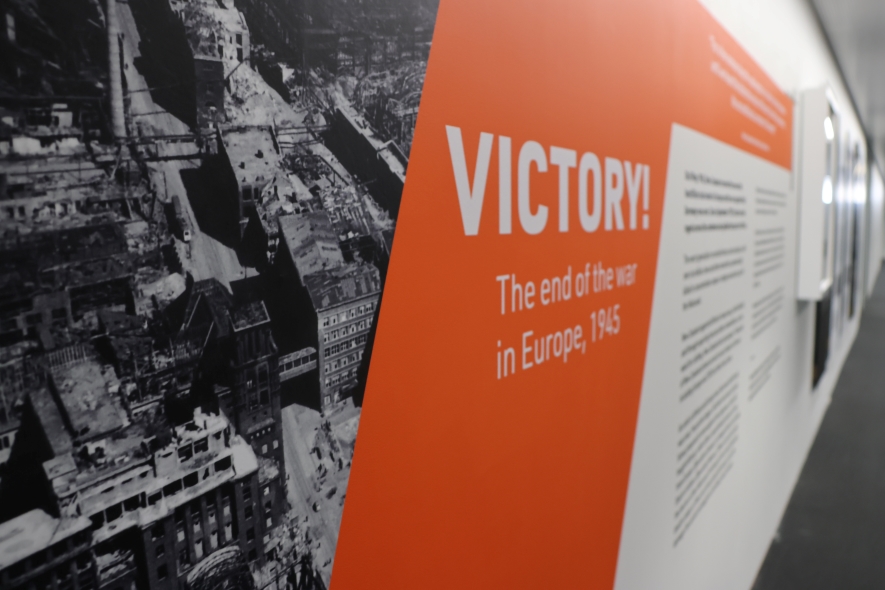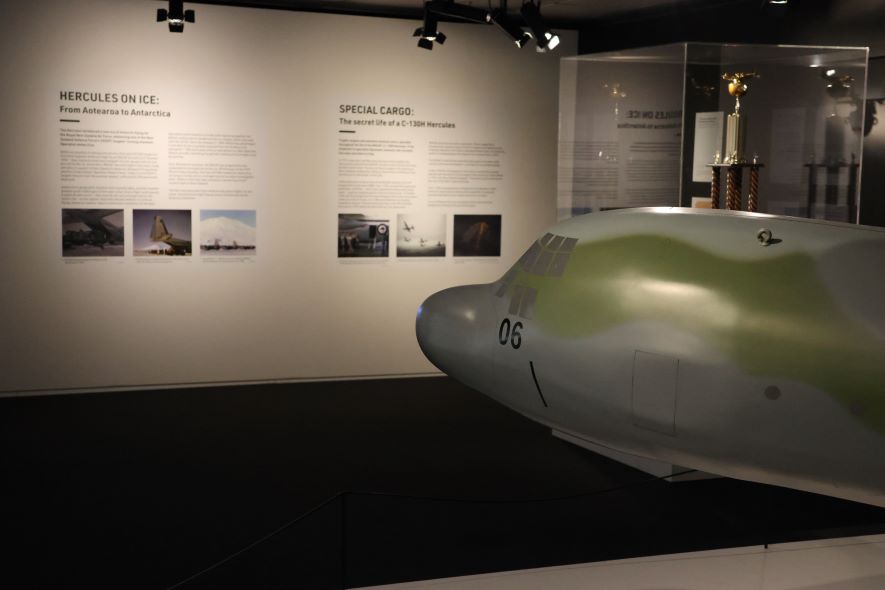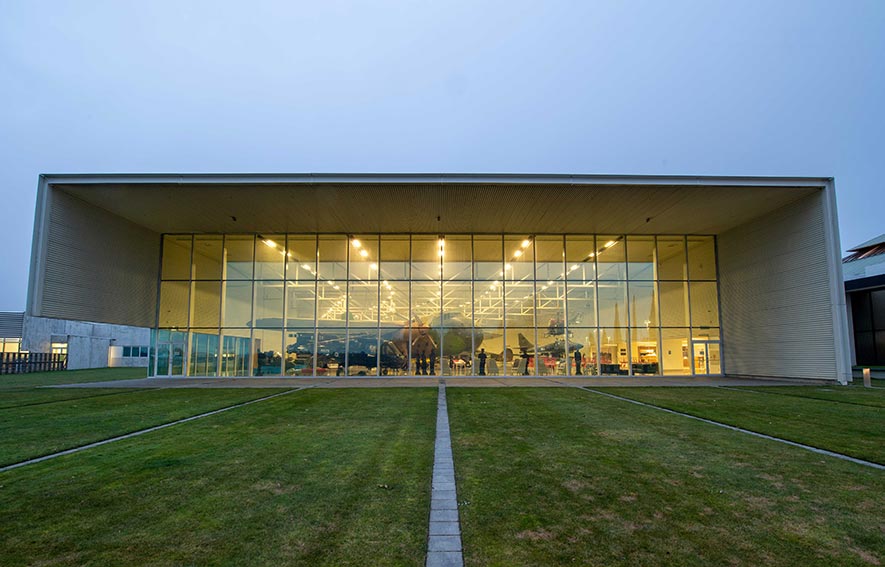What's on at Air Force Museum of New Zealand
Latest from the museum

Latest Exhibition
Victory!
Exhibition
The Mighty Hercules

Update
Overseas visitor charge

Our Aircraft
Explore AircraftMore to explore

Latest Exhibition
Exhibition

Update

More to explore
TRIPLE THREAT: Here's a lovely photo to start the day.
Way back in 1984 we teamed up with the Australian and United States air forces for an exercise called TRIAD84.
Three countries’ strike aircraft are pictured in formation near RNZAF Base Ohakea.
From top; USAF F16 81706, No. 75 Squadron Skyhawk NZ6205, RAAF Mirage A3-54.
This image and many thosands more can be found online at fotoweb.airforcemuseum.co.nz/fotoweb/
#skyhawk #raaf #usaf #f16 #ohakeaairbase #rnzaf #rnzafpastandpresent ... See MoreSee Less
Comment on Facebook
Now you see 'em - now you don't . That F-16 would still look great with a Kiwi roundel on its wing .
I remember watching F15 Eagles operating out of Whenuapai during that exercise in 84
And the Skyhawk still looks the most badass of the three...
kadang heran bang sama orang orang yang marah gitu karna kalah gw selama ini maen di 🀄𝗗𝗜𝗕𝗘𝗧𝟰𝗗 💯 aman2 aja selalu di kasih propit lagi setiap hari walaupun gak bnyak tapi rutin ksh situsnya
YOU CAN DEFINITELY PARK THERE MATE! RNZAF Station Ohakea hosted a lot of exotic aircraft in its time, and this six-engined beast is a standout.
It's a United States Air Force Boeing KB50 airborne refuelling tanker, 490326 and the photo is courtesy of the Norman Alfred Thomas Clark personal collection in our archive.
The KB50 is a B-29 Superfortress with two J-47 jet engines and a lengthened fueslage added to convert it to a tanker. The jets gave it added performance to lift more and fly faster to fuel up jet fighters.
They were introduced in early 1958, built out of surplus B-29 aircraft not needed by the Strategic Air Command.
The KB50 visited Ohakea in 1959 in support of the aircraft visiting for the opening of the new and much improved Wellington Airport at Rongotai.
The 134 KB50s started being phased out of service from 1964 - so they had a relatively short second life.
You can search our fantastic photo archive here: fotoweb.airforcemuseum.co.nz/fotow#usaf##boeingkb50g#B29 #superfortresstress ... See MoreSee Less
Comment on Facebook
4 turning and 2 burning
Now only 2 airworthy I believe
I hitched a ride in one OH to CH CH 64 then cabbage train back to Woodbourne to continue my Fitters course,big airshow @ OH then which featured some F105,s.
The KB-50J is a version of the B-50, a more powerful version of the B-29
That would have been the aircraft flying over our house in Matakawau on its way to Whenuapai. I was just 14 years old. My brother James Ashley Hunter would have been in the RNZAF then?
I don't remember the KB 50 but what was more memorable was the crash of Avro Vulcan XH498 from 617 Squadron.
The B50 also did away with the Wright R3350's and used the Pratt R4360's instead.
KB-50 is a redesign of the B-29. It has P&W Wasp Major R4360 28 cylinder engine as opposed to the Cyclone R-3350 18 cylinder engines used on the B-29. There is a taller vertical stabilizer and other changes including the refueler capability. It was not until the KB-50 J that the addition of two J-47 jet engines were added..
The B-50 started as a B-29D before redesignation. So far as I know, no B-29's were converted to B-50's; they were all new production. Boeing built 370 of the various B-50 models and variants between 1947 and 1953; 112 were converted to KB-50J tankers with the GE J-47 jet engines added.
And also shown in the Hobsonville development imagery
Got a feeling you are showing a B50, which was effectively an upgraded B29 with improved reliability.
KB-50J located at Pima Air and Space, Tucson Arizona.
Looks like the same hangar that the P-8s were operating out of before their new facility was built.
The 4360? engines did not have the spontaneous combustion issues of the original high-rated 3350 engines. The B-50 also had improved forward vision via a modified glazing arrangement. You can see the flat glass in the bomb aimer position.
Was there then, 64 if I remember correctly.
Brought back memories of this plane at the Tucson aerospace museum
Liev Russomaquina
Oliver GS
Crikey what a beast
View more comments
YOU CAN'T PARK THERE MATE: Today's entry comes from 7 January 1960 when the Goblin powering No. 14 Squadron Vampire NZ5771 decided to give up the ghost during take off, leaving Flying Officer TE Enright facing a difficult parking decision after belly landing.
This one didn't buff out - NZ5771 was#youcantparktherematentparktheremate ... See MoreSee Less
Comment on Facebook
Looks like the recently cut hay cushioned his landing.
Goblin hay by the looks of it
Unlike when the Pedal hits the metal when the Balsa/ply composite hits the bog it’s a disaster
Give up the ghost, love it should be Give up the Goblin...
Tom Enright's memoir "Many a Close Run Thing" is a must read for aviation enthusiasts, who enjoy the feeling of flying. He specifically mentions this landing in the books.
When it stopped goblin fuel it stopped goblin air and started goblin ground.
Ohakea has over the years been the sight of many a crash landing including a Vulcan and an F111 which landed probably in about the same place as the Vampire and met the same fate. I was on the apron at the time waiting to cross over to the bomb dump and got a ringside view.
I remember watching these taxying at Ohakea, they looked like ducklings waddling in a line. Canberras were far more impressive.
Looks like a good belly landing. ✔️
Probably wrong, but this looks more like a Venom to me, but clearly there is information to the contrary in the original post.
It won't fit in the Bailer Sir. 😳
Must have been shot down with a Garlic missile.
Its a Vampire jet ..he was bitten in the neck by an angry Vampire...
That wooden fuselage survived the impact quite well IMHO.
I’ll have it.
View more comments